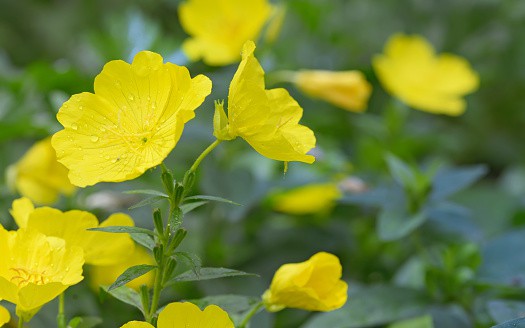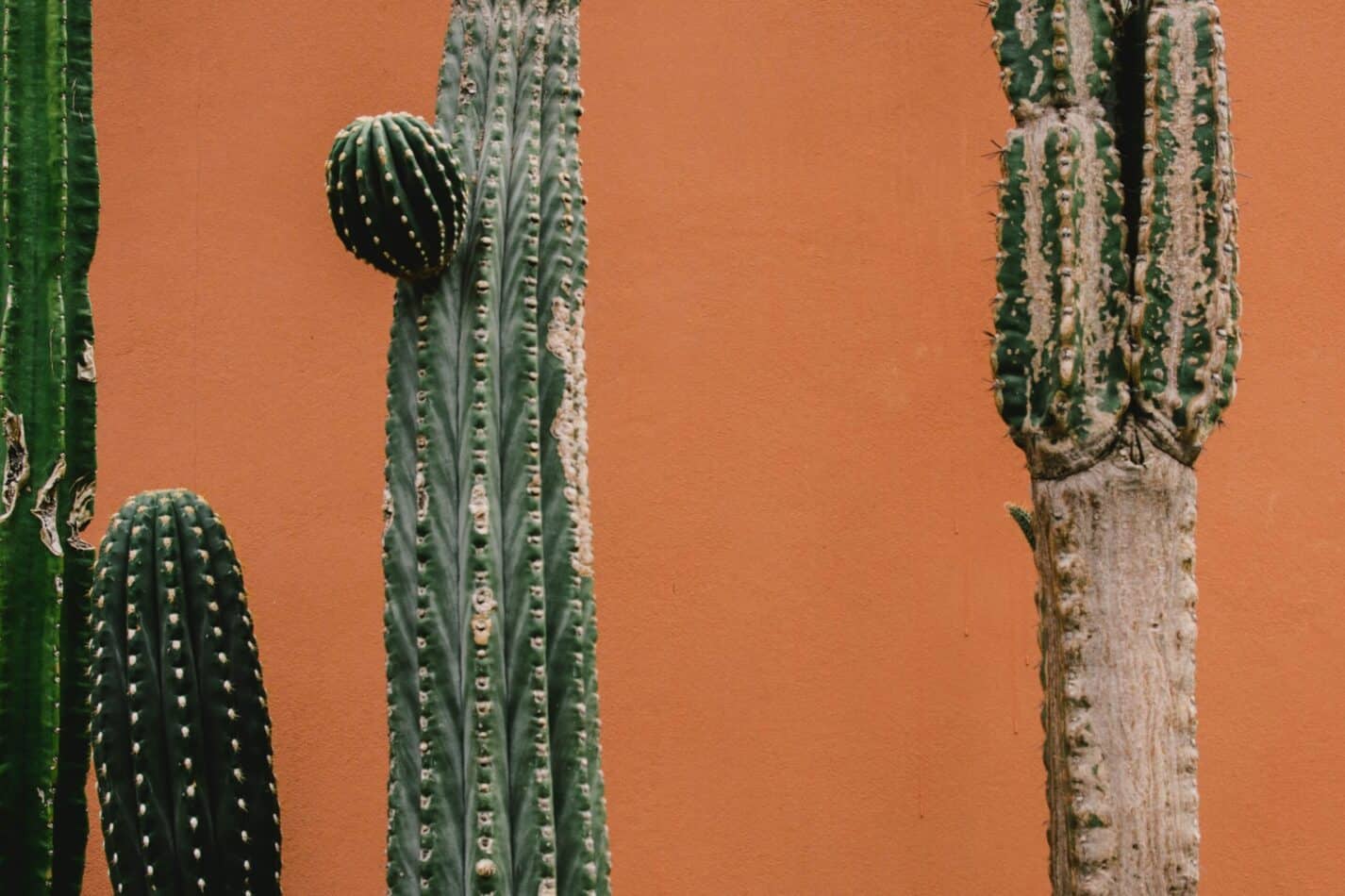The name “Common Evening Primrose” is derived from the species name, Oenothera biennis. Oenothera is derived from Ancient Greek words “oinos” (“wine”) and “theros” (“summer”), referring to the fragrant smelling flowers being present in the summer. The biennis is derived from the Latin word for twice, as the plant lives for two years.
How to plant
Common Evening Primroses, or Oenothera biennis, thrive in USDA Hardiness Zones from 2 to 10, with temperatures ranging from -20 to 15°C. It grows best in full sun, though it can tolerate light shade like afternoon shade in hot climates. It requires a light, well-draining soil, with a pH between 6.0 and 8.0.
To plant the Common Evening Primrose, dig a hole that is twice the width of your plant’s pot. Place the plant in the hole and spread the roots out evenly. Backfill the hole with soil, pressing down gently to secure the plant in the soil. Water the soil deeply to saturate the roots, and then water once per week until the plant has actively started to grow.
Once the primroses’ roots are securely settled in the ground, you can mulch the area with a 2- to 3-inch layer of organic material, like wood chips, pine needles, or cocoa hulls.
Meaning and symbolism
The Common Evening Primrose traditionally symbolizes humility and simplicity, which are similar to the meaning of its scientific name, Oenothera. The bloom is often associated with contentment as well as spiritual healing and new beginnings. The lemon-scent of the flower symbolizes love, devotion and appreciation.
History, mythology, and religious significance
In European cultures, Common Evening Primroses are associated with love. In the language of flowers, they symbolize grace, humility and devotion. In Celtic culture, they were associated with the moon and believed to bring heightened awareness while creating a strong connection to soil energy. In Christian symbolism, the blooms represent joy, hope, and fulfillment.
Flower varieties and their defining characteristics
Common Evening Primroses belong to the species Oenothera biennis and are a type of wildflower native to North America. They are part of the Onagraceae family and are annuals, sometimes considered biennials. These flowers come in a variety of colors, such as yellow, orange, red, white, and pink. They feature a single bloom with four petals per flower, and can grow to about 3 feet tall.
How to pot and repot
Common Evening Primroses can be potted in either a container pot or in a hanging basket. The container should be at least 10 inches deep and should have drainage holes. If the container will be left outdoors, make sure it’s made of a material that won’t break down with exposure to the elements. Fill the container with well-draining soil and position the plant in the center. Backfill with more soil, press down gently, and water deeply to saturate the soil.
If you’re repotting, you’ll need to carefully remove the plant from the existing pot. Gently loosen the soil and roots and place the plant in a new, bigger container. Add fresh soil, press down gently, and water it deeply again.
How to prune
Most Common Evening Primroses won’t require much pruning unless there are dead, broken, or diseased stems that need to be removed. Deadheading (removing old blooms) throughout the growing season will help encourage more flowers and can help to extend blooming period. You should also prune away any stems that appear to be dying or discolored as early as possible. This can help to prevent the spread of any diseases or pests.
How to propagate
The Common Evening Primrose is easy to propagate through the process of seed harvesting. As the flowers start to wilt and fade, they’ll produce seed pods. Harvest the pods and place the seeds in a cool, dry place that is away from direct sunlight. Once the seed pods open, you can spread the seeds in a shallow depth within well-prepared soil. Moisten the soil lightly and cover it with a damp cloth, creating a humid environment that will allow the seedlings to germinate.
Common pests and diseases
Common Evening Primroses are fairly resistant to most pests and diseases, though they are susceptible to powdery mildew, downy mildew, and leaf spot. To control these issues, you should avoid overwatering and provide the plant with plenty of sunlight. Proper air circulation and good hygiene can also help to prevent these conditions. If the plant is infected, you should remove any affected leaves and stems and dispose of them away from the rest of the plant. Insect pests like aphids, mites, and slugs can occasionally be found on the plant, and some insecticides can be used to keep them at bay.
Three frequently asked questions about Oenothera Biennis
Q: Where does Oenothera biennis grow?
A: The Oenothera biennis is a wildflower native to North America and can typically be found in the Midwest and Eastern parts of the United States. It can also be found in Canada, Mexico, and some parts of South America.
Q: When does Oenothera biennis bloom?
A: Oenothera biennis typically blooms from early summer to early fall. The flowers open in the evening and remain open until the following morning, hence the name “Evening Primrose”.
Q: Is Oenothera biennis edible?
A: The whole plant is edible and has a lemon-scent. It is often used in salads and soups.
A table fact sheet, with data
| Common Evening Primrose | Oenothera biennis |
|---|---|
| Family | Onagraceae |
| Plant Type | Annual/Biennial |
| Mature Size | up to 3 feet tall |
| Sun Exposure | Full Sun/Partial Shade |
| Soil Type | Light, Well Draining |
| Soil pH | 6.0-8.0 |
| Bloom Time | Early Summer – Early Fall |
| Flower Color | Yellow, Orange, Red, White, Pink |
| Hardiness Zones | 2 – 10 |
| Native Area | North America |
What we love from Amazon this week
Buy these wonderful flowers directly from Amazon:















